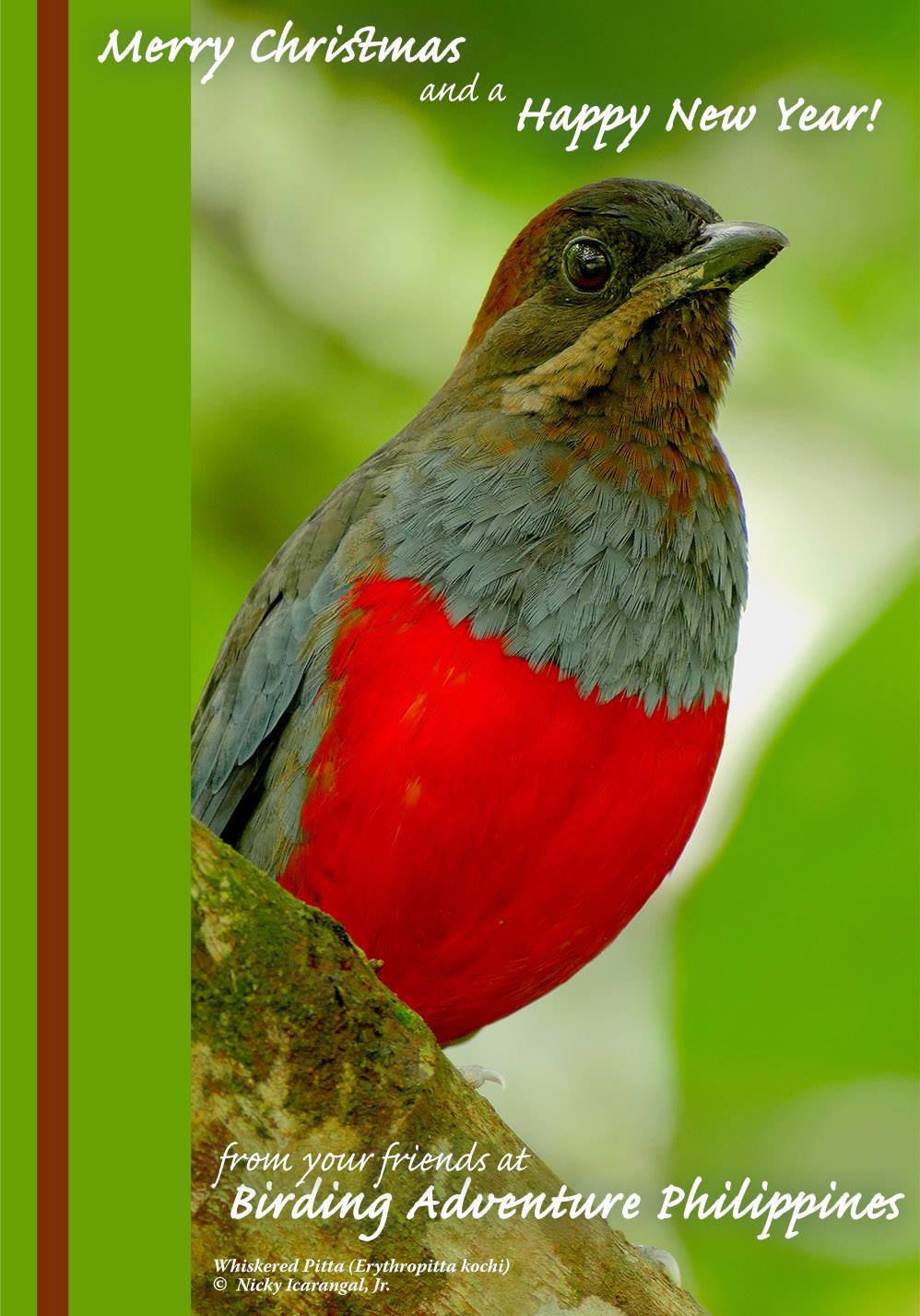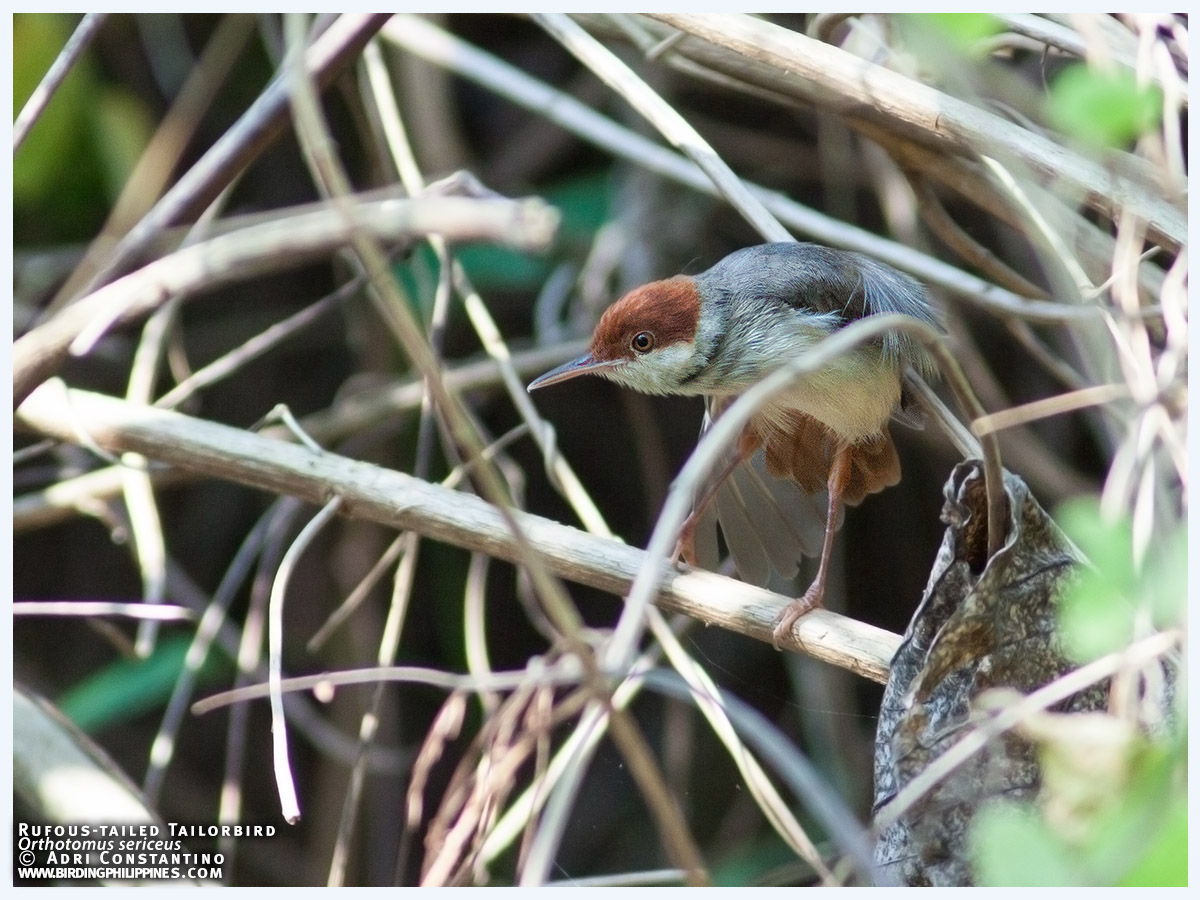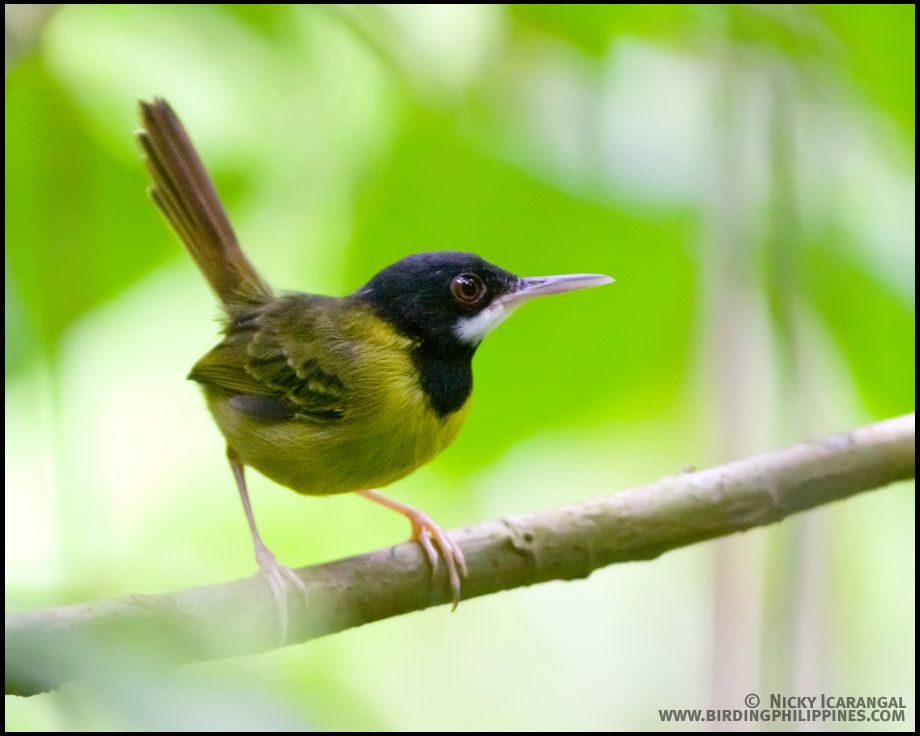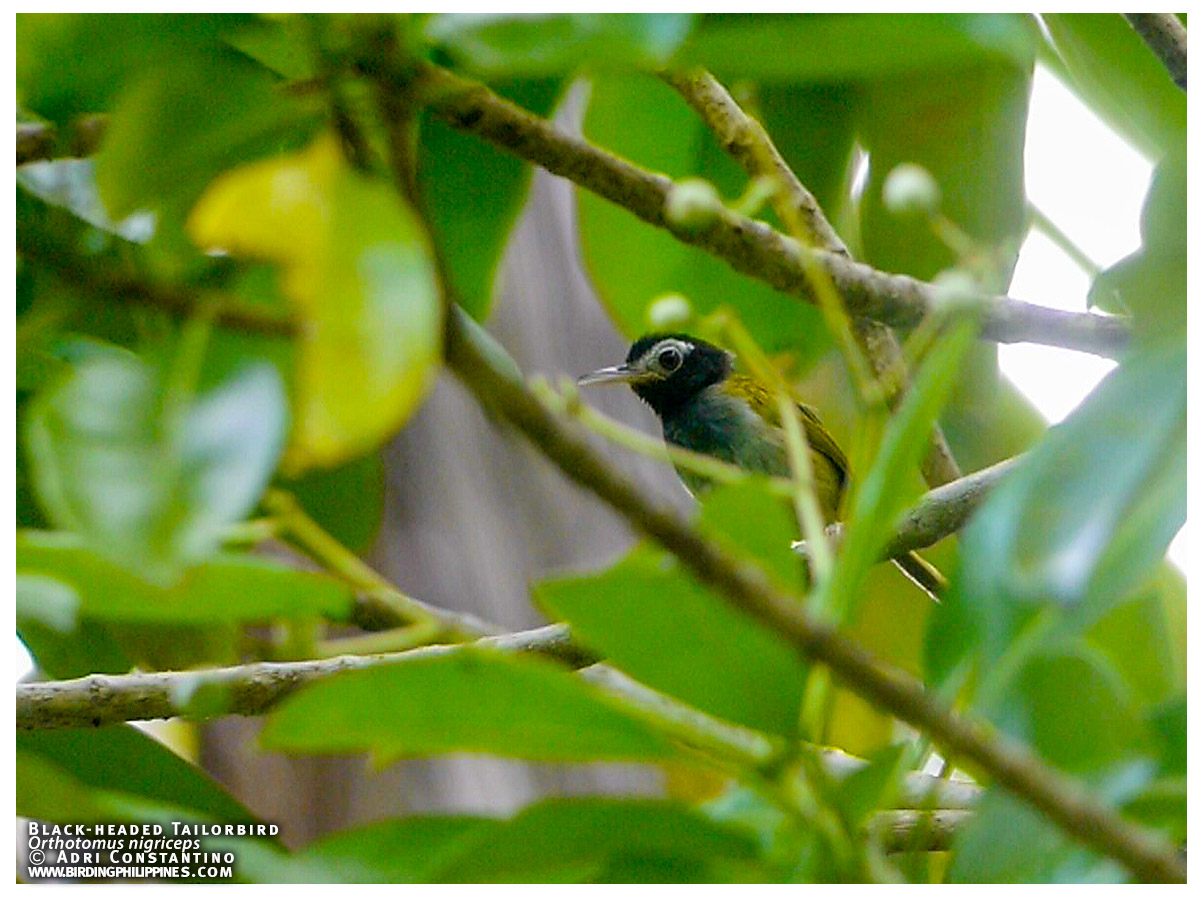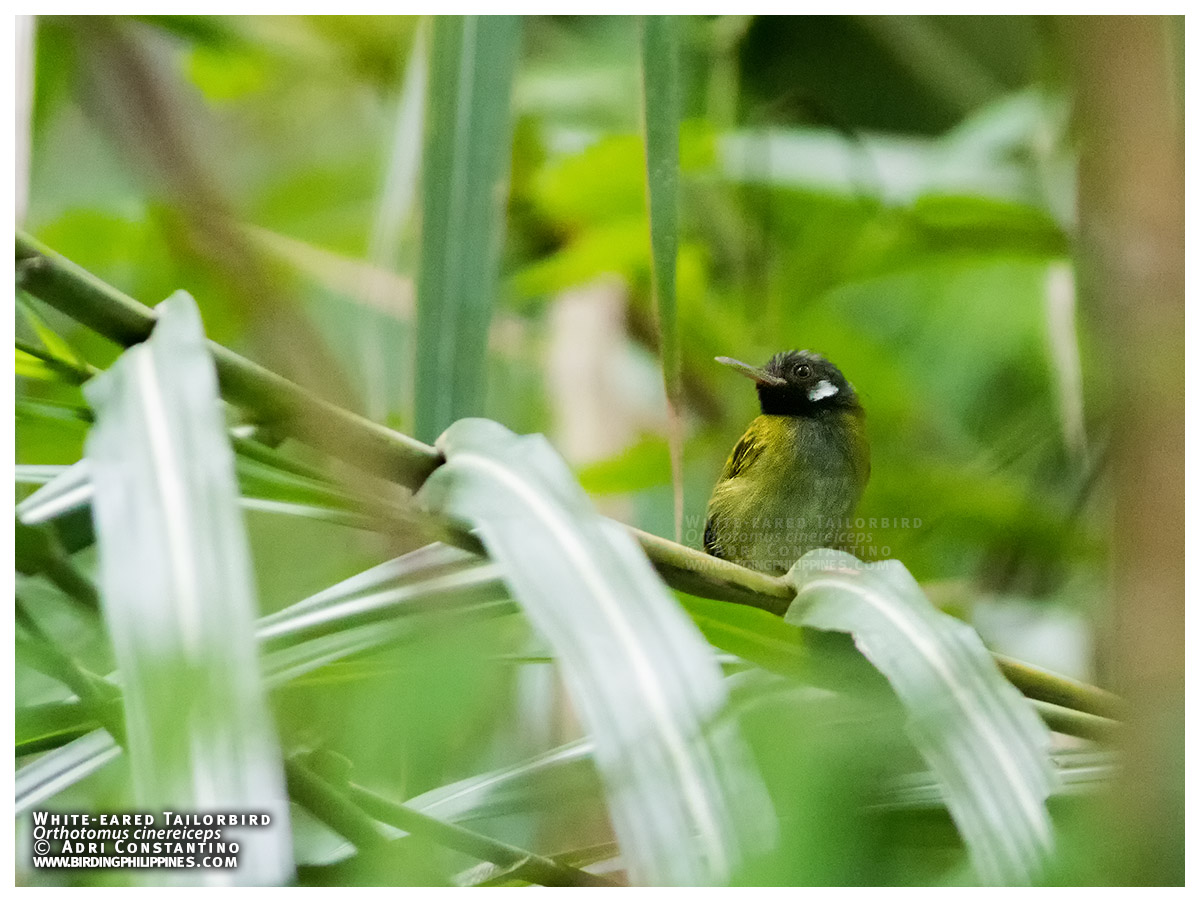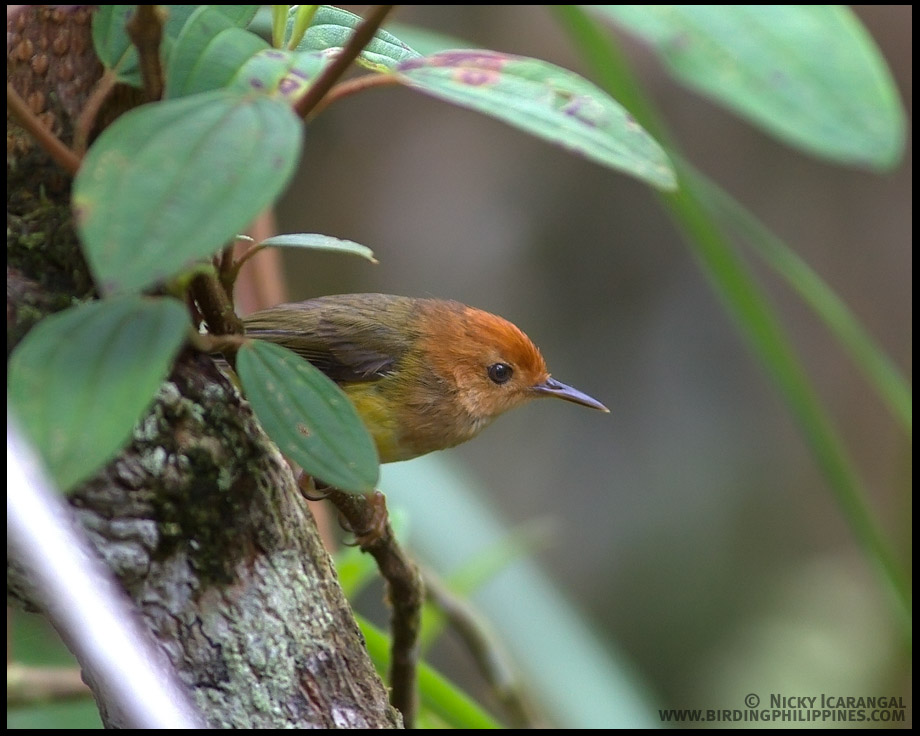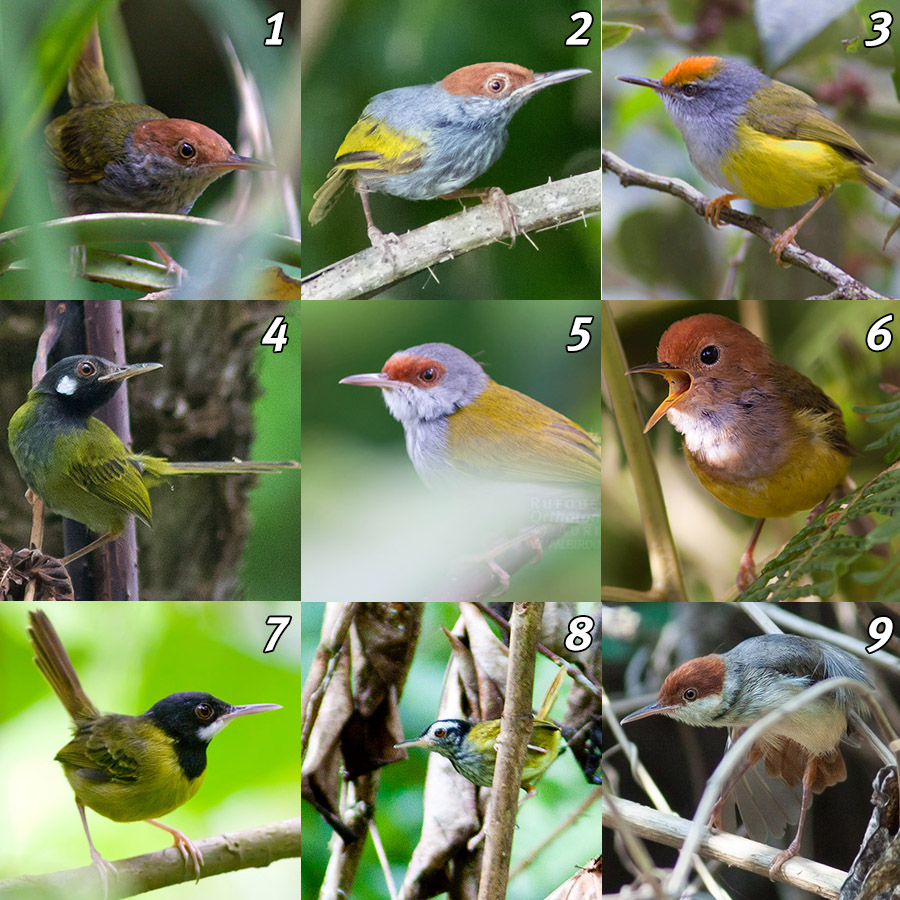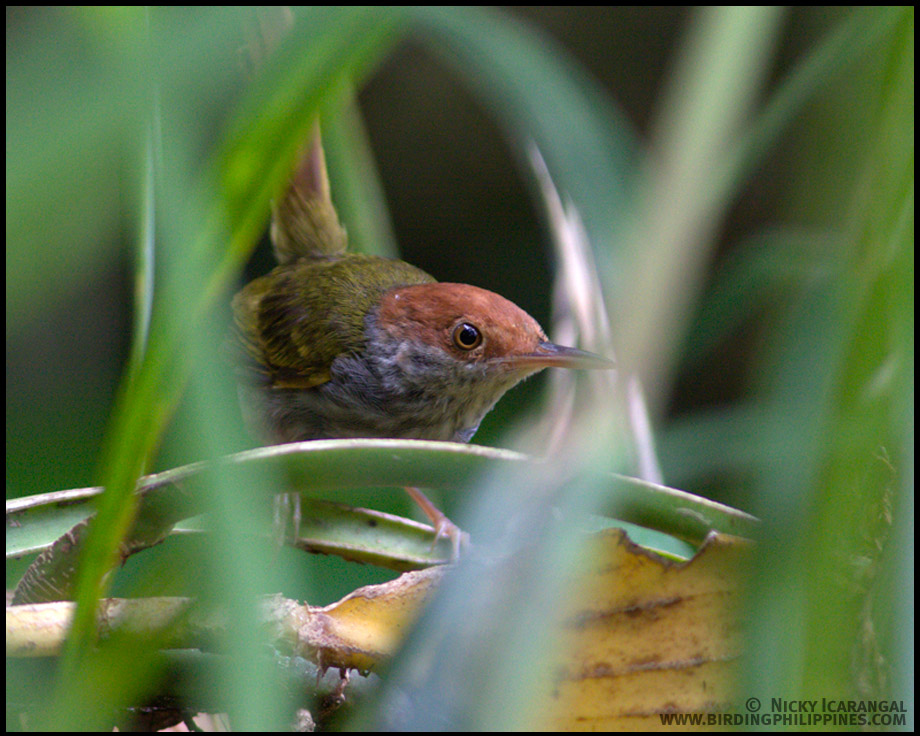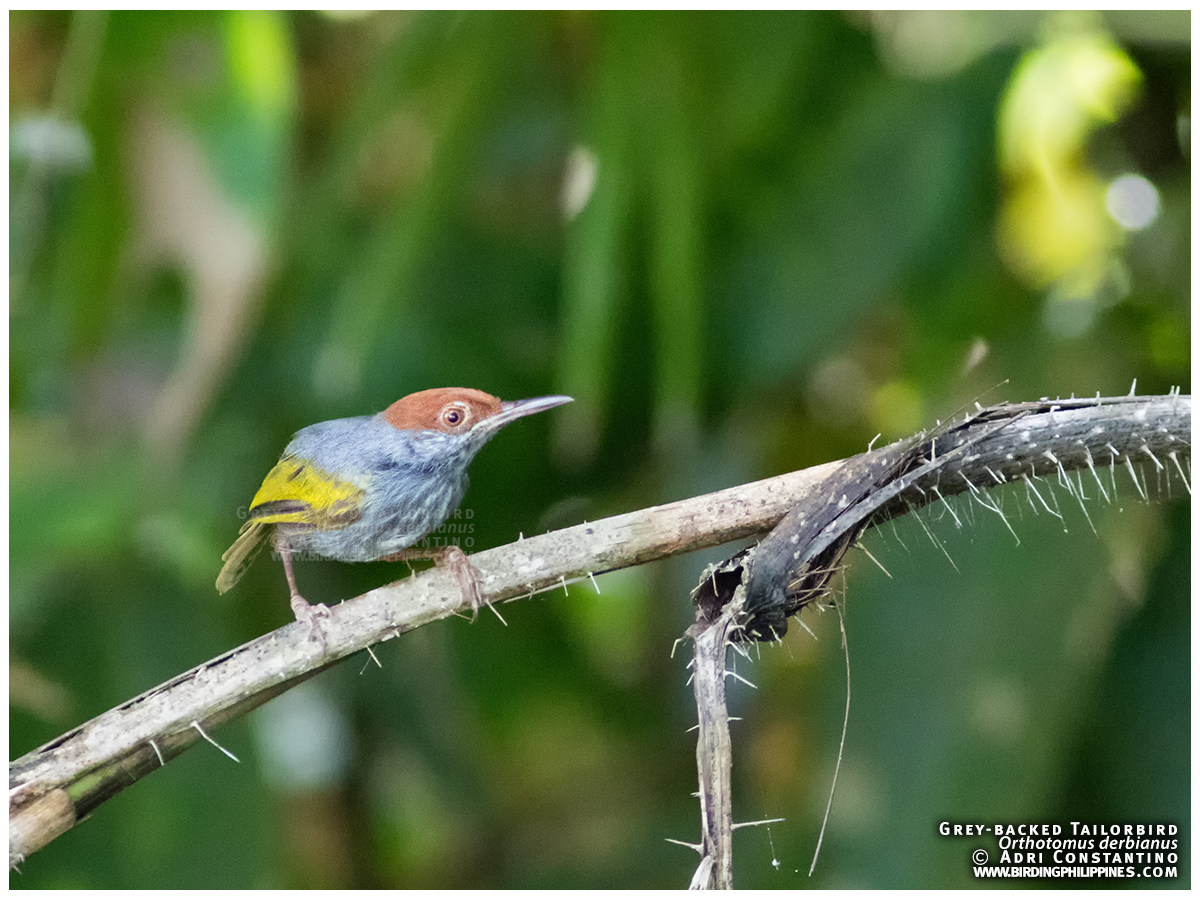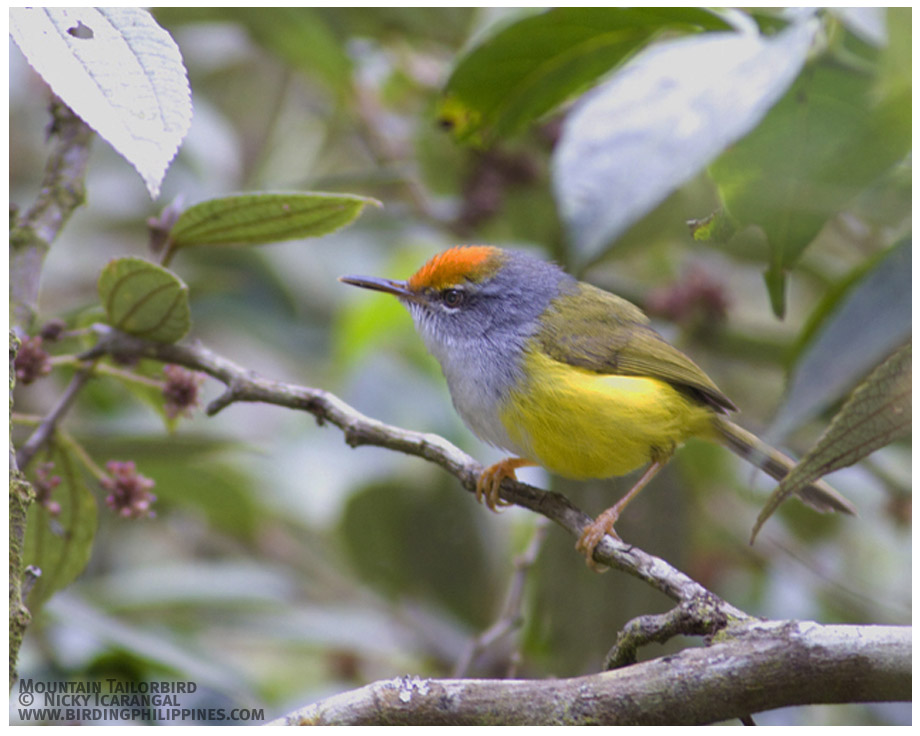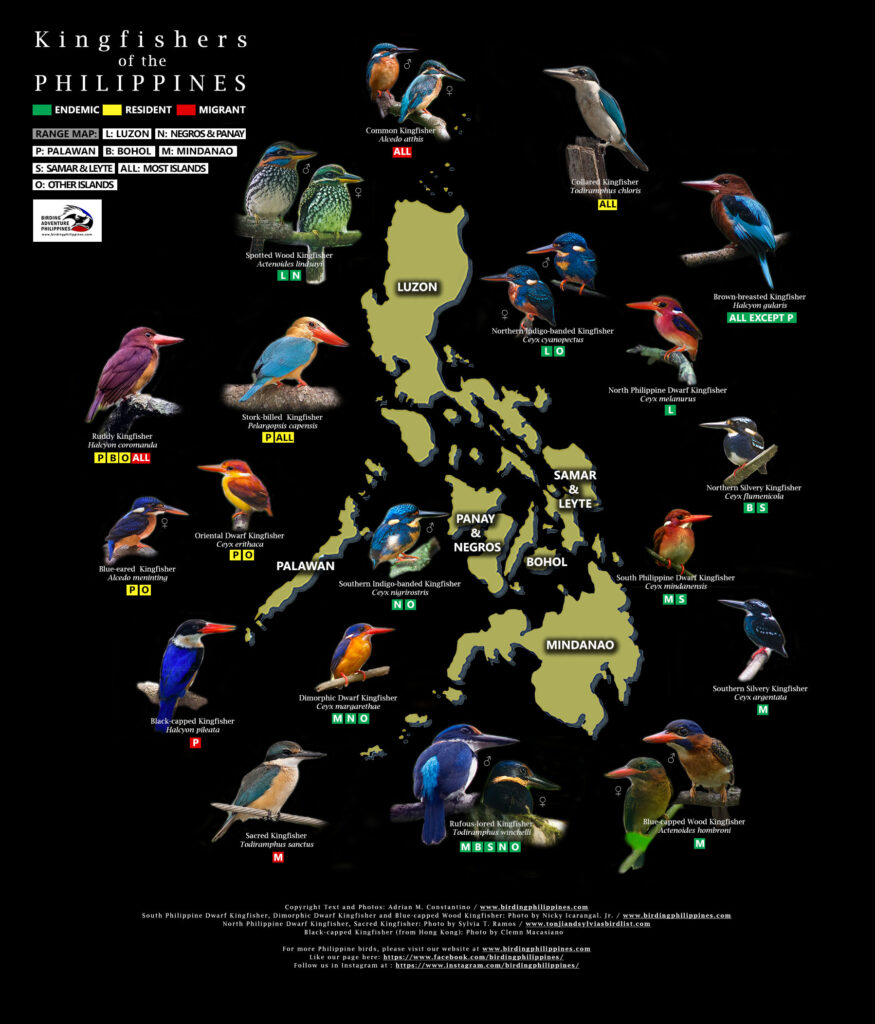
During the lockdown, one of our more successful posts is our series about kingfishers. For two weeks, we highlighted our endemic and non endemic Philippine kingfishers: their distribution, population status as well as some tidbits of trivia about their behavior.
Today, we are sharing with you a poster summarizing all the recorded kingfishers of the Philippines. Feel free to download or share away the poster. If you want a printer-friendly version: kindly click here to download: Kingfishers of the Philippines
The Kingfisher family (Alcedinidae) is one of the most well loved families in the avian world probably due to their bright and boldly patterned plumage. Their colors are usually dominated with blues, greens and orange-y browns. Their massive, pointy beaks are effective weapons in catching their prey. Contrary to their name, not all kingfishers feed on fish; they have a wide variety of diet ranging from small crabs, lizards & geckoes, snails, even small mammals and small birds. Several species of kingfishers live in habitats quite close to water, but there are kingfishers who prefer forest and woodland habitats.
In the Philippines, we have 19 species of kingfishers, with 11 species found only to to our country. If you want to revisit our previous, individual, detailed posts about our Philippine kingfishers, kindly just search for our hashtag #kingfisherweek at our Birding Philippines Facebook page.
Like our page here: https://www.facebook.com/birdingphilippines/
Follow us in Instagram at : https://www.instagram.com/birdingphilippines/
Copyright Text and Photos: Adrian M. Constantino / www.birdingphilippines.com
South Philippine Dwarf Kingfisher, Dimorphic Dwarf Kingfisher and Blue-capped Wood Kingfisher: Photo by Nicky Icarangal. Jr. / www.birdingphilippines.com
North Philippine Dwarf Kingfisher, Sacred Kingfisher: Photo by Sylvia T. Ramos / www.tonjiandsylviasbirdlist.com
Black-capped Kingfisher (from Hong Kong): Photo by Clemn Macasiano
References:
1) A Naturalist Guide to the Birds of the Philippines by Tanedo, Hutchinson, Constantino and Constantino. John Beaufoy Publishing. https://amzn.to/3iVwVDr
#birdingphilippines #birdsofthephilippines #wildbirdsofthephilippines #philippinebirds #birdingph #phbirding

